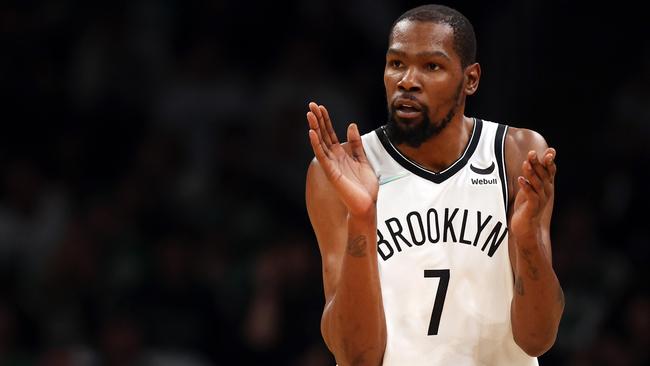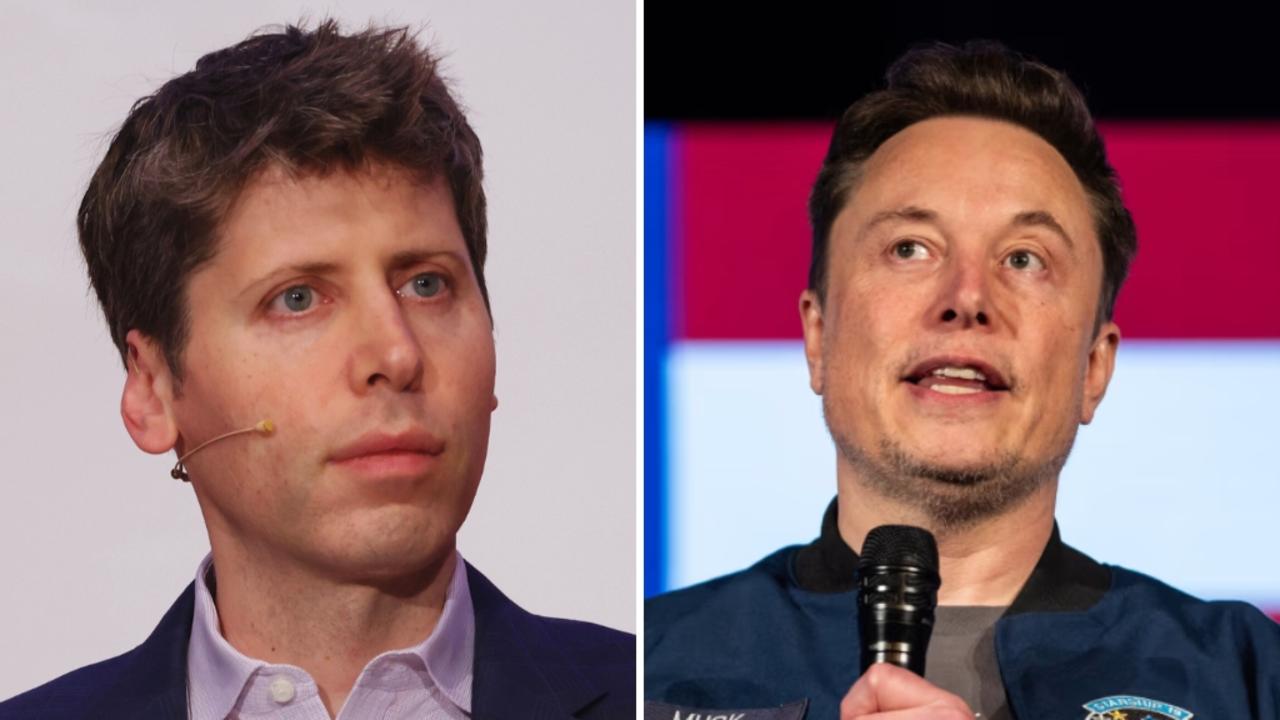The evolution of the basketball star
Kevin Durant, Nikola Jokic, Joel Embiid and Giannis Antetokounmpo are making Darwin proud as living proof of basketball adaptation.

The best players in the NBA this season were three very large men from three different countries, Nikola Jokic, Joel Embiid and Giannis Antetokounmpo, and even they might admit the best player in the world as the playoffs begin this weekend is Kevin Durant.
But there is something odd about the game’s biggest stars: Their games are nothing alike.
They happen to be about the same height, but at no other time in the history of the NBA have 215cm players been so remarkably dissimilar. They don’t look like each other. They don’t work like each other, either. They certainly don’t behave on the court like any of the hulking behemoths who came before them.
Even the stories of how they got to the league have little in common. Durant was the greatest American player of his era. Embiid was a volleyball player in Cameroon. Jokic was a pudgy kid in Serbia. Antetokounmpo was a scrawny teen in Greece.
But together these four players standing about 8.5m tall have cast a long shadow over the league. They are still the most dominant forces in a sport where simply being larger than everyone is no longer enough to dominate.
At a time when the big man risked becoming an endangered species, Jokic, Embiid, Durant and Antetokounmpo are making Darwin proud as living proof of basketball adaptation.
“I believe in evolution,” says NBA legend Bill Walton.
“These really incredible players who have capitalised and used and leveraged every possible advantage that today’s athletes have in terms of training and conditioning and nutrition and science and medicine and equipment and court surface and ball quality and the technology.
“Everything that goes into making today better than yesterday. I believe in all this stuff.”
It would be difficult to watch the NBA and believe otherwise. The first thing anyone sees when they look at these players is their size, but the most striking part about today’s big men is their collection of skills.
The mobility, nimbleness and versatility they flaunt on a nightly basis is nothing less than mind-boggling to the few people on the planet who see eye-to-eye with them.
“I come from an era where that was unheard of,” said Alaa Abdelnaby, an NBA player in the 1990s who now has a front-row seat to Embiid’s theatrics as a Philadelphia 76ers broadcaster. “That package was beyond anyone’s comprehension when I was in the league.”
Even basketball stats these days are subject to inflation, but their numbers this season were staggering. Jokic registered the highest player-efficiency rating of all time, surpassing the mark previously set by Antetokounmpo, who also broke his own record. Embiid, meanwhile, became the first centre since Shaquille O’Neal in 2000 to win the scoring title.
Which one of these international stars deserves the MVP award is the battleground of NBA podcasts, but far more interesting than the marginal discrepancies in their statistical cases are the massive differences in the way they do their jobs.
Their ancestors might lament big men today, but the game has never demanded more from their breed.
They have to cover more ground. They have to guard more positions. Like so many jobs in the modern economy, they have to do more of just about everything.
“There’s nobody in my group who’s going to like this style of basketball, ” says Bill Cartwright, the 215cm centre who won three championships with Michael Jordan’s Chicago Bulls. “But it is what it is right now. And it’s going to keep evolving into something else later.” Embiid is the closest approximation to a traditional big man, but there is nothing traditional about anyone his size who is graceful handling the ball, comfortable behind the three-point arc and productive at the free-throw line.
The only seven-footers ever to average more foul shots than Embiid this season were Wilt Chamberlain and O’Neal, but Chamberlain’s career-high at the line was 61 per cent and O’Neal made 51 per cent in the year he took the most foul shots. Embiid is an 81 per cent shooter.
There’s someone else a few thousand miles away doing things nobody has seen before. Jokic led the Nuggets in points, rebounds, assists, steals and blocks while functioning as Denver’s centre, point guard and basically every position in between. The whole team would fall apart without him. In fact, it does.
The Nuggets won Jokic’s minutes by 8.4 points per 100 possessions and managed to lose the minutes he was on the bench by 7.9 points. That gap in net rating was easily the widest margin in the league.
Jokic and Embiid will likely finish atop MVP ballots for the second year in a row, and most NBA general managers would still prefer to have Antetokounmpo attacking the hoop or Durant doing anything he wants in the playoffs, but they can’t go wrong with any of them.
What makes them so dangerous is they don’t just score over people. They also create ways to score around them. They can beat you vertically and horizontally.
“They’re basketball players who happen to be big,” Walton says, “as opposed to big guys who are trying to play basketball.”
How to stop these seemingly unstoppable talents is a question that will help determine the play-offs and contract negotiations this northern summer. Some big men will have to play smaller to stay on the court.
Other teams will ask smaller guys to play bigger. Their performance will be one of the driving factors behind deal talks and the distribution of hundreds of millions of dollars in salary as soon as the season is over.
But the great irony of big men reasserting their supremacy is that the three-point line was designed to blunt their genetic advantages.
The NBA was looking for ways to electrify the game and diversify its talent pool when it dropped a strip of paint on the court that would change basketball forever. Before the existence of this arc, it didn’t make sense for them to drift from the paint, the most efficient part of the court.
Now they had a powerful mathematical incentive. In every season between 1965 and 1980, the MVP of the league was a centre. But in the four decades since the line was introduced, especially the last one, the game shifted away from the basket and out of their control. This could have been an event of mass extinction for the giants roaming the basketball earth unless they adapted to survive.
The players who were already in the NBA when the three-point line joined them wouldn’t get that opportunity. Even the ones in college and high school would struggle to adjust to a game that fundamentally changed overnight. It would take a generation or two for big men to have the freedom to be anyone they wanted.
“For guys of my era, I always think: What would it have been like if you grew up and were told you could do everything?” says former NBA centre Chris Dudley.
One of the bizarre things about the way basketball talent is recognised, developed and rewarded is that despite all the money, resources and data poured into valuations, even the brightest minds can get the best players wrong.
It’s a humbling business that requires making predictions based on projecting how teenagers might behave a decade later. The market that exists to identify future talent is deeply inefficient almost by definition.
But it’s especially tricky to figure out how any big man might fit into today’s NBA because their job requirements keep shifting.
They are no longer confined by their position.
They’re redefining it.
“These guys don’t live under those restrictions or limitations,” Walton said. “One of the endlessly beautiful things about basketball is that it’s an extension of the creativity and imagination that comes from a fertile mind. We are witnessing that right now in the way these guys play.”
The Wall Street Journal


